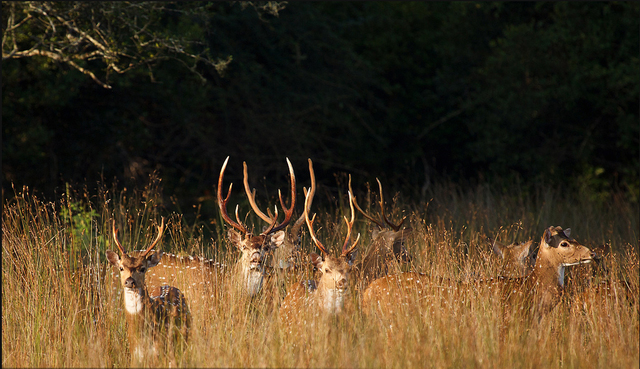HILO — The Big Island Invasive Species Committee has declared victory in its effort to remove axis deer from Ka‘u, nearly eight years since they were introduced. ADVERTISING HILO — The Big Island Invasive Species Committee has declared victory in
HILO — The Big Island Invasive Species Committee has declared victory in its effort to remove axis deer from Ka‘u, nearly eight years since they were introduced.
Spokeswoman Franny Brewer said there have been no confirmed sightings of the deer since the last one was killed in 2012.
“With any invasive species, timing is key,” she said. “The fact that people reported it and said, ‘Hey, there is something going on here in Ka‘u’” helped make the eradication effort a success.
Game cameras were installed across 5,200 acres, capturing nearly 7,000 hours of footage, to ensure the deer no longer were present. Four were killed by hired hunters.
A U.S. Fish and Wildlife investigation traced their introduction to a Mountain View man, a rancher and a pilot from Maui who arranged a sheep-for-deer swap between the islands in late 2009. The men said they wanted to create another hunting resource on the island.
The trio were convicted for possessing game animals without a permit.
The invasive species are located on Molokai, Lanai and Maui. According to BIISC, the deer cause millions of dollars a year in crop and landscape damage, and can jump higher than 6 feet, making fencing used to keep out other ungulates from native habitat useless.
“It would have been the undoing of decades and millions of dollars worth of work,” Brewer said, if they remained unchecked.
After being introduced on Molokai in 1868, the deer population increased to 7,000 in three decades, according to BIISC.
A dedicated response from multiple agencies — including U.S. Geological Survey, Hawaii Volcanoes National Park, Three Mountain Alliance Watershed Partnership and the Nature Conservancy — ensured the deer didn’t get a foothold on Hawaii Island, she said.
Vigilance from residents who reported possible sightings also helped, even if they usually turned out to be sheep or goats, Brewer said.
She said BIISC still encourages potential sightings to be reported by calling 443-4036 or 933-3340.
“We’d rather go out there and see that’s a goat than never get that first call,” Brewer said.



